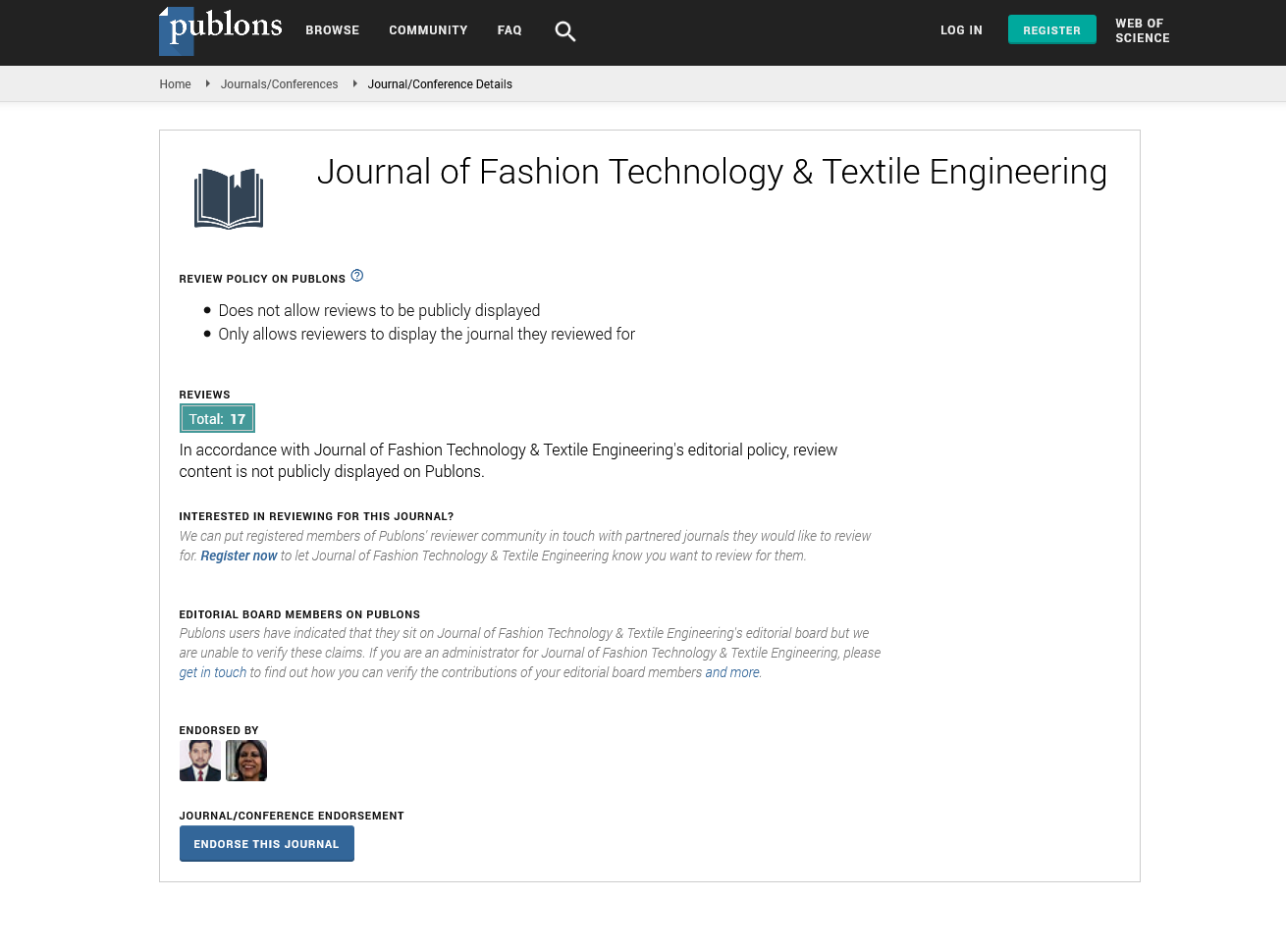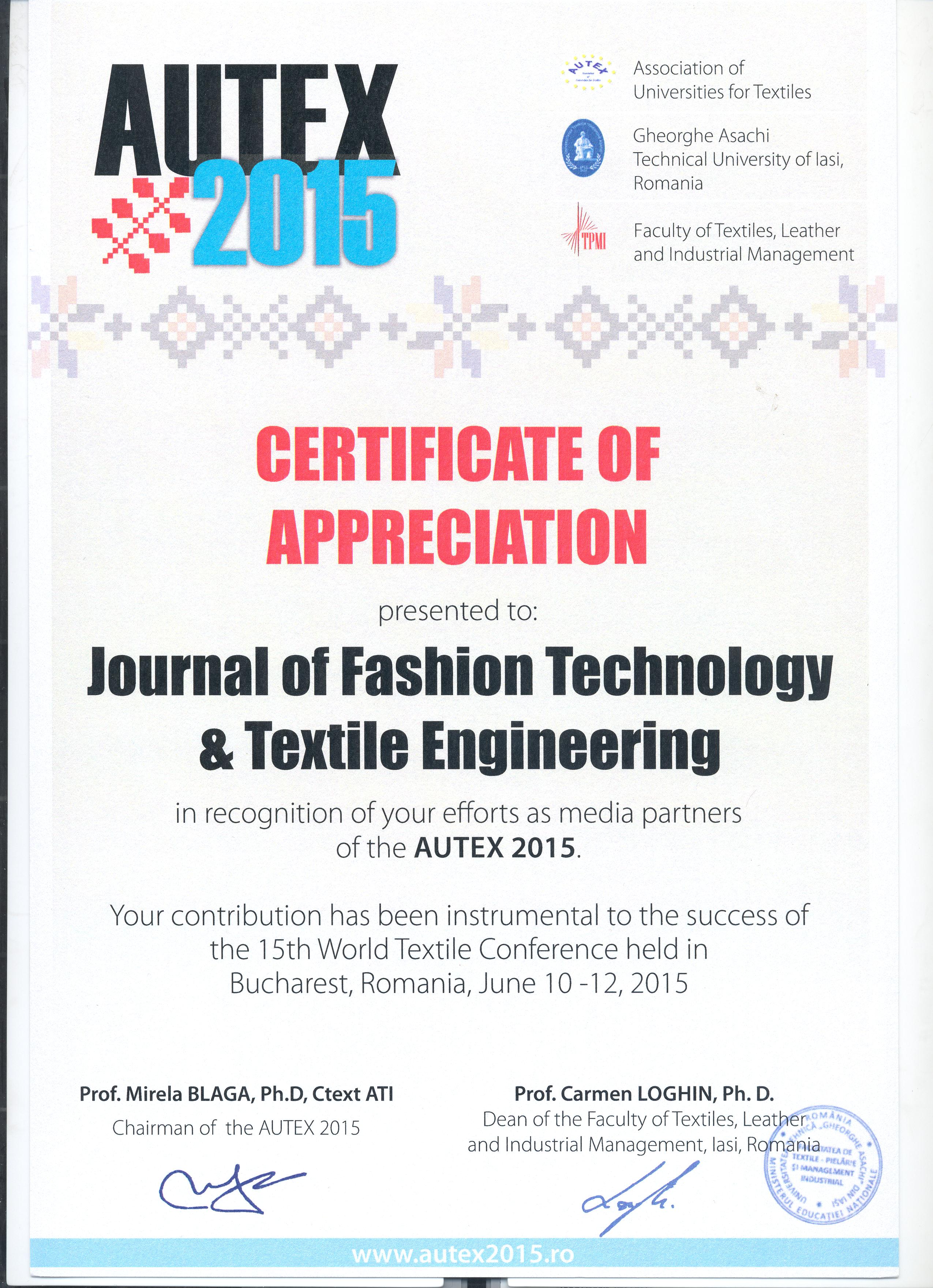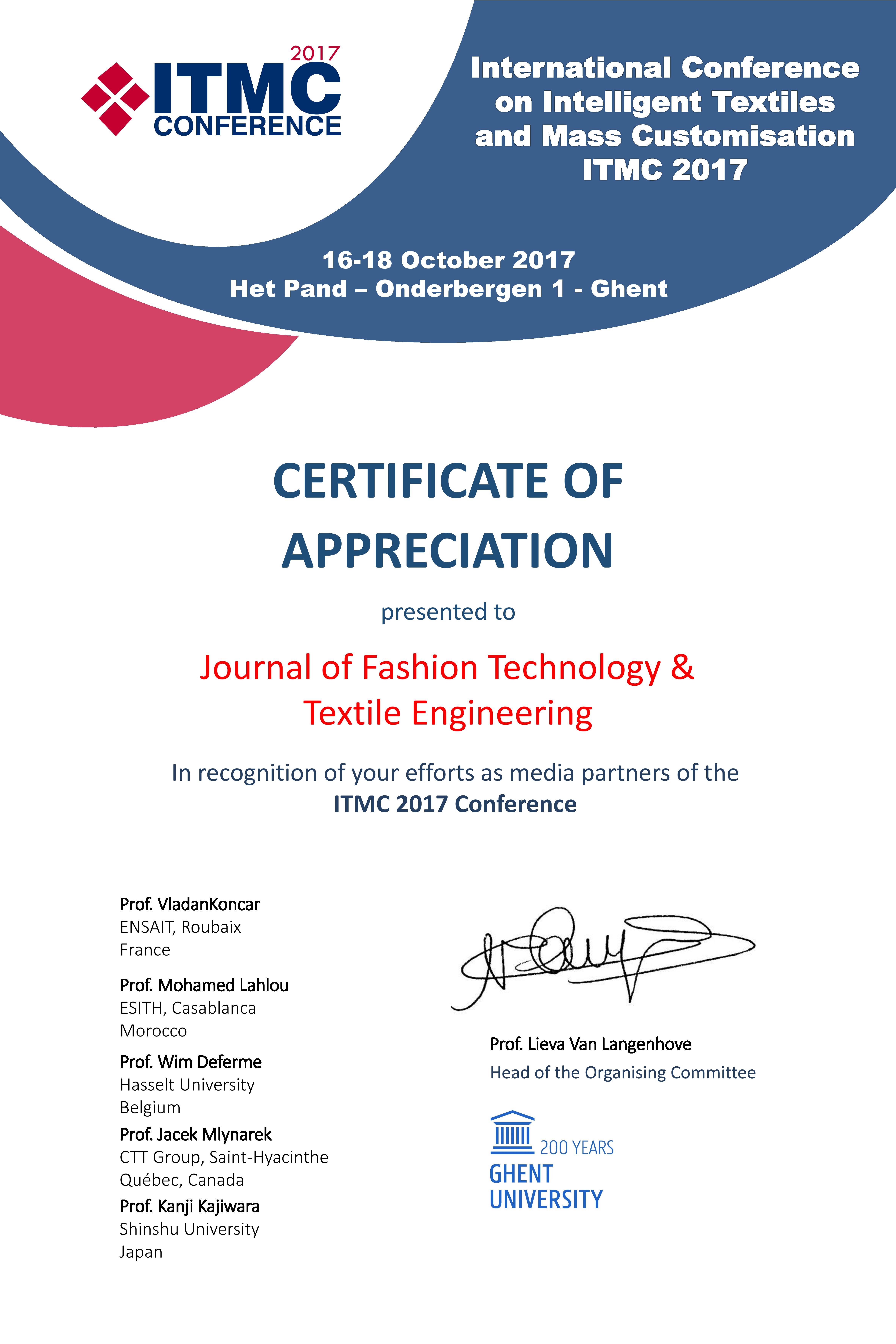Perspective, J Fashion Technol Textile Vol: 12 Issue: 5
Analyzing the Role of Nanotechnology in Fabric Durability and Performance
Rajesh Gupta*
1Department of Textile Technology, Indian Institute of Technology Delhi, New Delhi, India
*Corresponding Author: Rajesh Gupta,
Department of Textile Technology, Indian
Institute of Technology Delhi, New Delhi, India
E-mail: rajesh_gupta98@gmail.com
Received date: 23 September, 2024, Manuscript No. JFTTE-24-152108;
Editor assigned date: 25 September, 2024, PreQC No. JFTTE-24-152108 (PQ);
Reviewed date: 09 October, 2024, QC No. JFTTE-24-152108;
Revised date: 17 October, 2024, Manuscript No. JFTTE-24-152108 (R);
Published date: 25 October, 2024, DOI: 10.4172/2329-9568.1000374.
Citation: Gupta R (2024) Analyzing the Role of Nanotechnology in Fabric Durability and Performance. J Fashion Technol Textile 12:5.
Description
Nanotechnology has increasingly become a vital contributor to advancements in fabric technology, improving both durability and performance across a wide range of applications. By using materials on an atomic scale, researchers are able to make fabrics with enhanced properties, such as improved strength, stain resistance and moistureholding capabilities. The integration of nanotechnology in fabric production allows manufacturers to strengthen textile fibers at a molecular level. Traditional fabrics are often susceptible to wear and tear over time, which limits their longevity. Nanoparticles and nanocoatings provide an extra layer of strength to these materials. For example, embedding nanoparticles into textile fibers can reinforce the fabric structure, reducing its susceptibility to abrasion and other forms of degradation. This means that fabrics enhanced with nanotechnology retain their strength and form even after repeated washing and prolonged usage.
Some textiles incorporate carbon nanotubes, which are renowned for their extraordinary tensile strength. These microscopic tubes act as a supportive structure within the fiber, reducing strain and allowing the fabric to resist stretching and tearing more effectively. Such advances are particularly beneficial for high-performance and outdoor wear, where materials endure constant friction and exposure to harsh conditions. In addition to durability, nanotechnology has released the access to innovative ways of enhancing fabric performance. It has shown significant impact is in the formation of water-resistant and stain-repellent fabrics. Nanocoatings can be applied to fabrics to make them repel liquids and dirt, helping garments stay cleaner and reducing the frequency of washing. This not only benefits consumers by extending the lifespan of their clothing but also promotes more sustainable laundry practices by reducing water and detergent usage.
Nano-silver particles, for instance, are known for their antimicrobial properties. When embedded in textiles, they inhibit the growth of bacteria, which is particularly useful for sportswear and medical fabrics where hygiene is essential. By preventing bacterial buildup, these fabrics maintain a fresh feel, even with extended use. This has become a prepared in sports and healthcare, where odor and sanitation are top concerns. Comfort is a primary consideration in fabric design and nanotechnology is enabling the development of fabrics that are more breathable and adaptable to environmental conditions. Fabrics enhanced with nano-scale structures can regulate moisture and improve airflow, making them suitable for high-intensity activities or hot climates. Nanofibers, which are incredibly thin and lightweight, allow for the formation of fabrics that feel soft on the skin while maintaining breathability. The tiny fibers produce micro channels within the fabric, facilitating airflow and allowing sweat to evaporate quickly. This keeps individual cool and comfortable, even during physical exertion.
Nanotechnology has enabled the development of fabrics that adapt to temperature changes. For example, some textiles are coated with materials that can retain or dissipate heat depending on the surrounding environment. This feature is particularly valuable in outdoor apparel, where the wearer may experience a range of temperatures. With growing concerns over environmental impact, the textile industry is looking for sustainable methods of production and nanotechnology is helping in this effort. Traditional textile manufacturing often involves chemical treatments to achieve durability and performance characteristics. These treatments can be resource-intensive and may involve toxic chemicals. Nanotechnology can achieve similar or superior results with fewer resources and minimal waste.
For instance, water-repellent and stain-resistant fabrics typically require chemical treatments, which may not be environmentally friendly. Nanocoatings, in contrast, provide these benefits with a reduced environmental footprint. Moreover, nano-enhanced fabrics are typically more durable, reducing the need for frequent replacement and therefore contributing to less waste in the long term. Additionally, possible for recyclable and biodegradable nanomaterials in fabric manufacturing aligns with global goals for sustainability. Study continues to explore eco-friendly nanoparticles that can either degrade safely or be reclaimed for further use, thereby reducing the environmental impact of textiles.
Conclusion
The role of nanotechnology in fabric durability and performance continues to expand, with research for increasingly advanced textiles. From enhanced durability and comfort to improved sustainability, nanotechnology is proving to be an invaluable asset in textile innovation. As scientists and manufacturers explore the full potential of nano-engineered fabrics, can expect to see a future where clothing and other textiles are not only more strong but also more adaptive and environmentally responsible. This evolution reflects a change towards fabrics that supply to modern demands for performance and sustainability without give up on quality or comfort.
 Spanish
Spanish  Chinese
Chinese  Russian
Russian  German
German  French
French  Japanese
Japanese  Portuguese
Portuguese  Hindi
Hindi 


